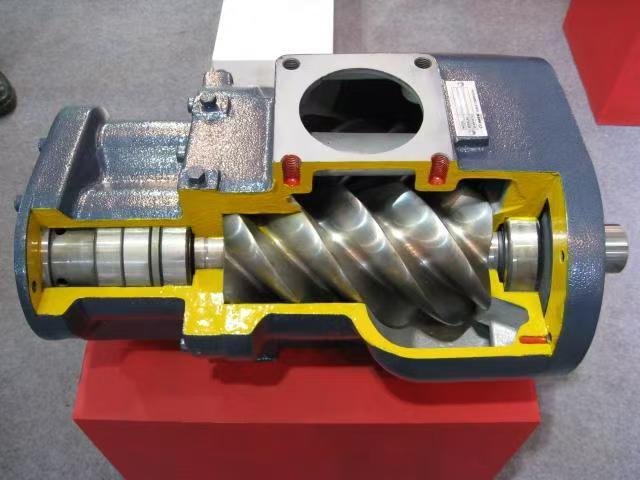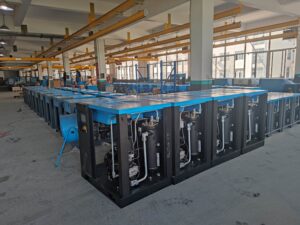Conditions Increasing the Risk of Air End Rust in Screw Compressors

The following scenarios significantly raise the likelihood of rust formation in the screw compressor’s air end:
- Prolonged Inactivity: Extended downtime allows condensed water from oxidized oil to backflow into the air end, causing rust.
- Low Oil Temperature Operation: Setting the cooling fan activation temperature too low prevents the oil from reaching optimal temperatures, leading to oil deterioration, emulsification, and subsequent rust.
- Mismatched Air Demand: Insufficient loading time due to low air consumption results in water accumulation and rust on the air end.
- Persistent Low-Temperature Operation: Moisture fails to evaporate during prolonged low-temperature operation, accelerating rust formation.
- Untreated Water in Storage Tank: Failure to drain accumulated water from the air receiver allows backflow into the air end, causing rust.
Solutions
- Optimize Unloading Time:
- Extend the compressor’s unloading phase (during idle operation) to manually raise oil temperatures above 85°C (ideally 90°C).
- Regular Condensate Drainage:
- For low-usage scenarios, shut down the compressor and drain condensate from the oil-gas tank every 6 hours until lubricant flows out. Adjust drainage frequency based on environmental conditions.
- Adjust Fan Activation Temperature:
- For users with minimal air demand, increase the cooling fan’s activation temperature to maintain higher oil temperatures.
- Weekly Water Drainage Procedure:
- Method: Before startup each morning, open the oil-gas tank drain valve until a small amount of lubricant flows out, then close the valve.



